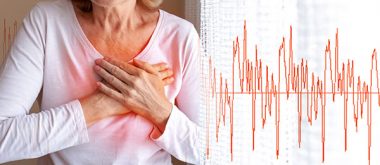Healthy women in their 40s are having heart attacks that diet and exercise can’t prevent, and scientists are still struggling to understand why.
Approximately 35 percent of heart attacks in women under 50 is thought to be caused by spontaneous coronary artery dissection (SCAD), a rare occurrence associated with a range of even rarer health conditions. SCAD heart attacks are usually not fatal but can cause serious damage to heart muscles and even sudden death if untreated.
What Makes SCAD Heart Attacks Different?
Most heart attacks are caused by atherosclerosis, a blockage of fat or cholesterol that builds up in the arteries that normally supply blood (and the oxygen it carries) to the heart. SCAD, on the other hand, is a tear in the wall of the blood vessel itself. The artery walls swell as blood seeps in, compressing the tube-like interior and constricting the flow of blood to the heart.
The usual coronary risk factors like high blood pressure, cholesterol, smoking, and age don’t seem to apply when it comes to SCAD. Generally, the risk of having a heart attack for women starts to rise at age 55, with most female heart attacks occurring at 70 or later. However, the average SCAD patient is in her 40s or 50s.
Ninety percent of SCAD sufferers are women.
Researchers believe the main reason for this disparity is hormonal. Estrogen and progesterone are thought to weaken blood vessel walls. Pregnancy (especially multiple pregnancies) may therefore increase SCAD risk due to heightened or imbalanced hormone levels both pre- and postpartum.
Other Risk Factors
A number of rare diseases and syndromes affecting the body’s circulatory system or connective tissues are more common in women than men and seem to be associated with greater risk of SCAD. These include the following:
- Fibromuscular dysplasia (FMD),
- Polyarteritis nodosa (PAN),
- Ehlers-Danlos syndrome (EDS),
- Loeys-Dietz syndrome,
- Marfan, and
- Lupus
Mental health complications like anxiety and depression are also more common in women than men. Chronic stress from these disorders floods the body with toxic chemicals called cortisol and epinephrine and proteins called cytokines, which cause inflammation. Sustained exposure to these compounds can lead to oxidative stress and hypertension, damaging cells and the immune system in the process.
Signs and Symptoms

Many women (and their physicians) might misdiagnose or altogether ignore heart attack symptoms because they are subtly different for women. They may be mild and pass fairly quickly or be mistaken for heartburn and simply endured. Chest pain or pressure is typical, but so is jaw and stomach pain, back pain, and pain in either or both arms. This pain can be accompanied by intense nausea, sweating, fatigue and shortness of breath.
It is vital not to ignore these symptoms. SCAD causes only 0.5 percent of cardiac deaths, but as with any heart attack, palpitations can seriously weaken the heart muscle, and the risk of having another coronary event immediately goes up.
Prevention
Managing risk for SCAD starts with behavioral changes. Lower stress with meditation or mindful exercise; don’t take steroids or stimulants; and avoid physical overexertion, especially if you know you have any of the conditions that increase risk.
SCAD can only be definitively diagnosed by intravascular ultrasound or optical coherence tomography screening, so you may need to self-advocate for additional testing if you have any other risk factors or believe you have been misdiagnosed with atherosclerosis.





